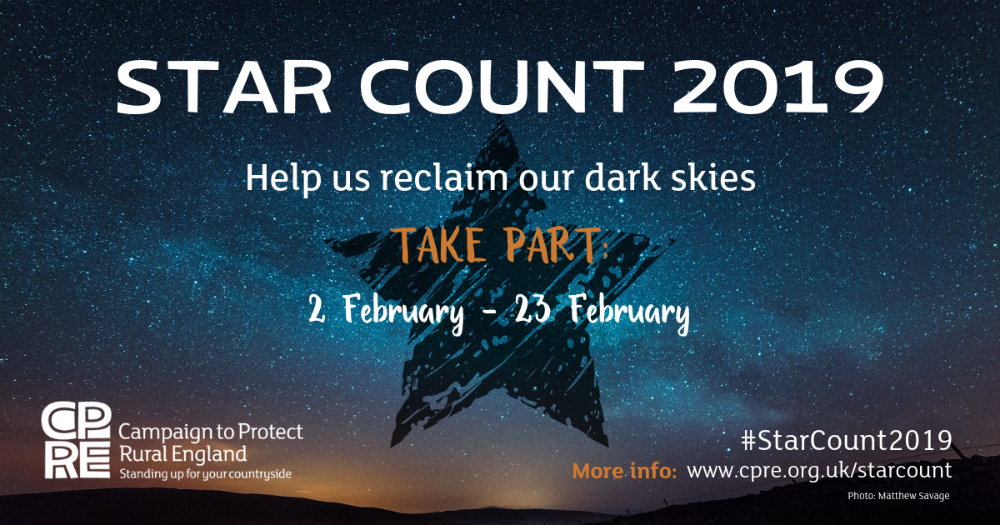Caption: Area damaged by fire and sand lizard on affected area at Upton Heath © Simon Cripps
Eco & Environment, Education, Events & Entertainment | Posted on February 4th, 2019 | return to news
Cosmic census gets the nation counting stars
Dorset CPRE is inviting everyone to take part in Star Count 2019 to help map our magical dark skies
Star Count 2019, organised by the Campaign to Protect Rural England (CPRE) gives people the opportunity to become ‘citizen scientists’ by taking part in a cosmic census that will help to map our dark skies.
The nationwide Star Count, which is also supported by the British Astronomical Association, goes live tomorrow, and will be running for the first three weeks of February (Saturday 2 February – Saturday 23 February). Stargazers, whether in town or countryside, will be asked to count the number of stars they can see (with the naked eye) within the constellation of Orion, which is only visible in the winter months.
Dark night skies are a special quality of the Dorset AONB (Area of Outstanding Natural Beauty) and contribute to the areas sense of tranquillity and remoteness. A combination of clear night skies and low levels of light pollution make Dorset one of the best places in the country for stargazing.
As well as promoting dark skies and engaging people in the wonders of stargazing, CPRE aims to highlight the blight that light pollution – an issue often overlooked – is causing our dark skies, and its subsequent impact on people and nature.
Not only does light pollution prevent people from enjoying the beauty of a starry sky, it can seriously disrupt wildlife behaviour and badly affect people’s sleeping patterns, impacting on physical and mental health and wellbeing.
Emma Marrington, dark skies campaigner at CPRE, said:
‘A dark sky filled with stars is one of the most magical sights our countryside has to offer, and for thousands of years our night sky has been a source of information, fascination and inspiration for all of humanity. Increasingly, however, too many people are denied the opportunity to experience this truly natural wonder.
‘We want as many people as possible, from right across the country, to get out and get involved with Star Count 2019. How many stars you will see ultimately depends upon the level of light pollution in your area, but by counting stars and helping us to map our dark skies, together we can fight back against light pollution and reclaim the night sky.’
Bob Mizon, UK coordinator of the British Astronomical Association Commission for Dark Skies, said:
‘Star counts are not only fun things to do in themselves but also help to form the national picture of the changing state of our night skies. As lighting in the UK undergoes the sweeping change to LEDs, it is really important that we know whether or not they are helping to counter the light pollution that has veiled the starry skies for most Britons for the last few decades.’
The countryside charity will use the results from Star Count 2019 to create a new map to show how light pollution is affecting the nation’s views of the night sky. CPRE’s Night Blight maps, based on satellite data, showed that just 22% of England is untouched by light pollution, and that more than half of our darkest skies are over National Parks and Areas of Outstanding Natural Beauty.
Through the Star Count, CPRE will be able to provide more detailed and up-to-date information on the impact that light pollution is having on people’s experience of dark skies. Using this information CPRE will work with local and national Government to ensure that appropriate lighting is used only where it’s needed – helping to reduce carbon emissions, save money, and protect and enhance our dark skies.
Please share post:
READ NEXT
LATEST NEWS










